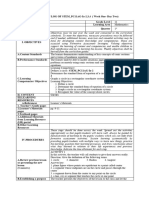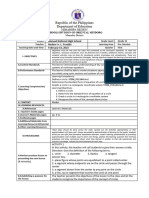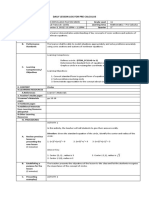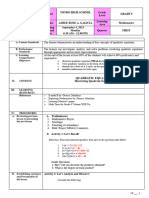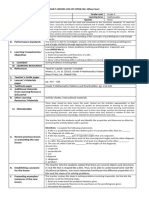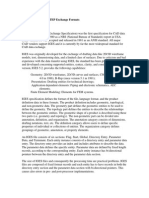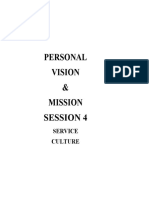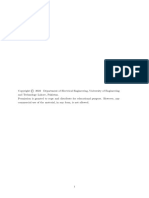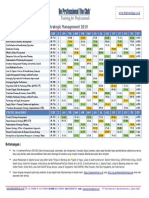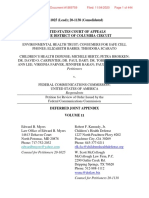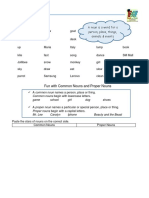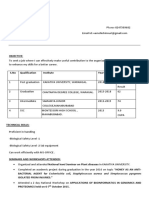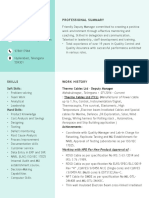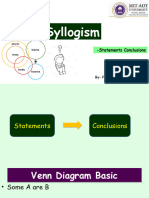0 ratings0% found this document useful (0 votes)
0 viewsII-Day 37
II-Day 37
Uploaded by
Sir AsherCopyright:
© All Rights Reserved
Available Formats
Download as DOCX, PDF, TXT or read online from Scribd
II-Day 37
II-Day 37
Uploaded by
Sir Asher0 ratings0% found this document useful (0 votes)
0 views3 pagesCopyright
© © All Rights Reserved
Available Formats
DOCX, PDF, TXT or read online from Scribd
Share this document
Did you find this document useful?
Is this content inappropriate?
Copyright:
© All Rights Reserved
Available Formats
Download as DOCX, PDF, TXT or read online from Scribd
Download as docx, pdf, or txt
0 ratings0% found this document useful (0 votes)
0 views3 pagesII-Day 37
II-Day 37
Uploaded by
Sir AsherCopyright:
© All Rights Reserved
Available Formats
Download as DOCX, PDF, TXT or read online from Scribd
Download as docx, pdf, or txt
You are on page 1of 3
LESSON LOG OF M10GE-IIi-j-1 (Week Ten-Day Two)
School Grade Level Grade 10
Teacher Learning Area Mathematics
Teaching Date and Time Quarter Second
Objectives must be met over the week and connected to the curriculum standards. To meet the
objectives, necessary procedures must be followed and if needed, additional lessons, exercises and
remedial activities may be done for developing content knowledge and competencies. These are
I. OBJECTIVES assessed using Formative Assessment Strategies. Valuing objectives support the learning of content
and competencies and enable children to find significance and joy in learning the lessons. Weekly
objectives shall be derived from the curriculum guides.
A. Content Standards The teacher demonstrates understanding of key concepts of coordinate
geometry.
B. Performance Standards The learner is able to formulate and solve problems involving geometric figures
on the rectangular coordinate plane with perseverance and accuracy.
Learning Competency: Solve problems involving geometric figures on the
coordinate plane. (M10GE-IIi-j-1)
C. Learning Competencies/ Learning Objectives:
Objectives 1. Determine whether the equations describe a circle or not.
2. Apply the concepts of circles in solving real-life problems.
3. Demonstrate disaster risk management.
II. CONTENT Coordinate Geometry – Solving Problems involving Circles
III. LEARNING RESOURCES teacher’s guide, learner’s module, compass
A. References
1. Teacher’s Guide Pages 228-229
2. Learner’s Materials Pages 267-268
3. Textbook pages
4. Additional Materials
from Learning Resource
(LR) portal
B .Other Learning Resources
These steps should be done across the week. Spread out the activities appropriately so that
pupils/students will learn well. Always be guided by demonstration of learning by the pupils/ students
which you can infer from formative assessment activities. Sustain learning systematically by providing
IV. PROCEDURES pupils/students with multiple ways to learn new things, practice the learning, question their learning
processes, and draw conclusions about what they learned in relation to their life experiences and
previous knowledge. Indicate the time allotment for each step.
Use Activity 8: A Circle? Why Not? On page 267 of LM
Determine which of the following equations describe a circle and which do not.
1. x2 + y2 + 2x - 8y + 26 = 0
2. x2 + y2 + 9 = 4x -10y
3. x2 – y2 -6x -8y -32 = 0
4. x2 + y2 + 8x + 14y + 65 = 0
A. Review previous lesson or Answers:
presenting the new lesson 1. No. x2 + y2 + 2x - 8y + 26 = 0 can be written as (x +1)2 = y- 4)2 = -9. Notice that
-9 cannot be expressed as a square of another number.
2. Yes. x2 + y2 + 9 = 4x -10y can be written as (x – 2)2 + (y + 5)2 = 20
3. No. x2 – y2 - 6x - 8y -32 = 0 is not an equation of a circle. Its graph is not also a
circle.
4. No. x2 + y2 + 8x + 14y + 65 = 0 is merely a point. The radius must be greater than
0 for a circle to exist.
Ask the students to have a closer look at some aspects of the equation of a circle.
B. Establishing a purpose for
The next item in the discussion will focus on the real-life applications of the
the lesson
equation of a circle.
C. Presenting examples/ Use Activity 9: Find Out More! Item # 5 on page 267 of LM as example.
instances of the new lesson 5. The Provincial Disaster and Risk Reduction Management Committee
(PDRRMC) advised the residents living within the 10 km radius critical area to
evacuate due to eminent eruption of a volcano. On the map that is drawn on a
coordinate plane, the coordinates corresponding to the location of the volcano is
(3, 4).
a. If each unit of the coordinate plane is equivalent to 1 km, what is the equation
of the circle enclosing the critical area?
b. Suppose you live at a point (11, 6). Would you follow the advice of the
PDRRMC? Why?
c. In times of eminent disaster, what precautionary measures should you take to
be safe? Answers:
5. a. ( x-3)2 + (y – 4)2 = 100
b. Yes, because point (11, 6) is still within the critical area.
c. Follow the advice of PDRRMC.
Practice: By pair.
Suppose you are the leader of a two-way radio team with 15 members that is
tasked to give warnings to the residents living within the critical area. Where
D. Discussing new concepts
would you position each member as regards the current situation and to warn
and practicing new skills #1
the residents living within his/her assigned area? Explain your answer.
Answer:
d. (Evaluate students’ responses/explanations.)
E. Discussing new concepts
and practicing new skills #2
The teacher asks the students what conditions must be met to determine that
F. Developing mastery (leads
the given equation represents a circle?
to formative assessment 3)
G. Finding practical Let students formulate a problem involving circles.
applications of concepts and
skills in daily living
The teacher guides the students to come up with the following:
x2 + y 2 = r2 standard form of the equation of a circle with center at (0,0)
H. Making generalizations and
(x-h)2 + (y-k)2 = r2 standard form of the equation of the circle with center
abstractions about the lesson
at (h,k)
x2 + y2 + Dx + Ey + F = 0 general equation of the circle
Let the students answer item 6 of Activity 9: Find Out More! On page 268 of LM
6. Cellular phone networks use towers to transmit calls to a circular area. On a
grid of a province, the coordinates that correspond to the location of the towers
and the radius each covers are as follows: Wise Tower is at (-5, -3) and covers a 9
km radius; Global Tower is at (3, 6) and covers a 4 km radius; and Star Tower is at
(12, -3) and covers a 6 km radius.
a. What equation represents the transmission boundaries of each tower?
b. Which tower transmits calls to phones located at (12, 2)? (-6, -7)? (2, 8)?
(1, 3)?
I you were a cellular phone user, which cellular phone network will you subscribe
I. Evaluating Learning
to? Why?
Answers:
6 a. Star Tower: (x + 5)2 + (y+ 3)2 = 81
Global Tower: (x – 3)2 + (y – 6)2 = 16
Star Tower: ( x- 12)2 + (y + 3)2 = 36
b. (12, 2) – Star Tower
(-6, -7) – Wise Tower
(2, 8) – Global Tower
(1, 3) – Wise and Global Tower
c. Many possible answers. Evaluate students’ responses.
J. Additional activities or
remediation
V. REMARKS
Reflect on your teaching and assess yourself as a teacher. Think about your students’ progress. What
works? What else needs to be done to help the pupils/students learn? Identify what help your
VI. REFLECTION instructional supervisors can provide for you so when you meet them, you can ask them relevant
questions.
A. No. of learners who earned 80%
of the evaluation
B. No. of learners who require
additional activities for remediation
who scored below 80%
C. Did the remedial lesson work? No.
of learners who have caught up with
the lesson.
D. No. of learners who continue to
require remediation
E. Which of my teaching strategies
worked well? Why did these work?
F. What difficulties did I encounter
which my principal or supervisor can
help me solve?
G. What innovation or localized
materials did I use/ discover which I
wish to share with other teachers
You might also like
- 1920 - 0725 DEMO LESSON PLAN Problem Solving FactoringDocument4 pages1920 - 0725 DEMO LESSON PLAN Problem Solving FactoringEy Sy100% (1)
- Ed12 2012Document1 pageEd12 2012valeryNo ratings yet
- Sop For Oil Purification SystemDocument8 pagesSop For Oil Purification SystemSonrat100% (1)
- II-Day 38Document2 pagesII-Day 38Ivan Rey Porras VerdeflorNo ratings yet
- G9 LP Module 1 Lesson 1.2 Illustration of Quadratic EquationDocument3 pagesG9 LP Module 1 Lesson 1.2 Illustration of Quadratic EquationEmmanuel SioNo ratings yet
- PC I-2Document3 pagesPC I-2Belinda LorenNo ratings yet
- Daily Lesson Log of M8Al-Ib-2 (Week 2 Day 3) : Can The Difference of Two Squares Be Applicable To 3 - 12 If No, Why?Document4 pagesDaily Lesson Log of M8Al-Ib-2 (Week 2 Day 3) : Can The Difference of Two Squares Be Applicable To 3 - 12 If No, Why?zirconis10No ratings yet
- PC Ii-13Document6 pagesPC Ii-13Fritzie Jane Babia BayotlangNo ratings yet
- DAILY LESSON LOG OF STEM - PC11AG-Ia-2,3,4 (Week One-Day Two)Document3 pagesDAILY LESSON LOG OF STEM - PC11AG-Ia-2,3,4 (Week One-Day Two)PETER JOHN BACANINo ratings yet
- II-Day 30Document4 pagesII-Day 30Sir AsherNo ratings yet
- Republic of The Philippines Department of Education: Manaul National High School Rodner Jr. L. Fruelda February 14, 2023Document3 pagesRepublic of The Philippines Department of Education: Manaul National High School Rodner Jr. L. Fruelda February 14, 2023Lloyd Francis CarillaNo ratings yet
- DAILY LESSON LOG OF STEM - PC11AG-Ia-2,3,4 (Week One-Day Three)Document3 pagesDAILY LESSON LOG OF STEM - PC11AG-Ia-2,3,4 (Week One-Day Three)PETER JOHN BACANINo ratings yet
- III-Day 38Document3 pagesIII-Day 38Rainman InsanityNo ratings yet
- COT - 1 - I-Day 30Document3 pagesCOT - 1 - I-Day 30brian.aplicadorNo ratings yet
- Pre-Cal DLL Week 3Document3 pagesPre-Cal DLL Week 3Lloyd Francis CarillaNo ratings yet
- LessonExemplar Math10 Q1 MELC12 MGTribunsayDocument7 pagesLessonExemplar Math10 Q1 MELC12 MGTribunsayMARY GRACE TRIBUNSAYNo ratings yet
- Republic of The Philippines Department of Education: Manaul National High School Rodner Jr. L. Fruelda February 15, 2023Document4 pagesRepublic of The Philippines Department of Education: Manaul National High School Rodner Jr. L. Fruelda February 15, 2023Lloyd Francis CarillaNo ratings yet
- Cot 1 22 23Document3 pagesCot 1 22 23Noemi Rosario SanchezNo ratings yet
- I-Day 32Document4 pagesI-Day 32EDITHA PAGUYONo ratings yet
- I-Day 26Document11 pagesI-Day 26EDITHA PAGUYONo ratings yet
- Graphing A Circleon Coordinate PlaqneDocument7 pagesGraphing A Circleon Coordinate PlaqnePERATER, JELLY A.No ratings yet
- G10 DLP Q2 Week 10 Day 2Document7 pagesG10 DLP Q2 Week 10 Day 2RT MIASNo ratings yet
- Simplified TMDI Lesson PlanDocument6 pagesSimplified TMDI Lesson PlanREBUSORA BTLED IANo ratings yet
- I-Day 4Document3 pagesI-Day 4Diana Rose Bagui LatayanNo ratings yet
- g9 LP Module 1 Lesson 2a.2 Solving Quadratic Equations by Extracting Square RootsDocument4 pagesg9 LP Module 1 Lesson 2a.2 Solving Quadratic Equations by Extracting Square RootsEmmanuel SioNo ratings yet
- G10 DLP Q2 Week 10 Day 3Document7 pagesG10 DLP Q2 Week 10 Day 3RT MIASNo ratings yet
- Math9 DLL July 29Document5 pagesMath9 DLL July 29Maezelle Ansay MacalatanNo ratings yet
- DAILY LESSON LOG OF M9AL-Ia-b-1 (Day Four)Document4 pagesDAILY LESSON LOG OF M9AL-Ia-b-1 (Day Four)julito iliganNo ratings yet
- Daily Lesson Log of M8Al-Ib-2 (Week 2 Day 4) : X X - 15 and 15 - 2x - XDocument3 pagesDaily Lesson Log of M8Al-Ib-2 (Week 2 Day 4) : X X - 15 and 15 - 2x - Xzirconis10No ratings yet
- I-Day 33Document3 pagesI-Day 33EDITHA PAGUYONo ratings yet
- Math9 DLL July 30Document5 pagesMath9 DLL July 30Maezelle Ansay MacalatanNo ratings yet
- Illustrating Quadratic EquationDocument3 pagesIllustrating Quadratic EquationAimee Rose GaliciaNo ratings yet
- G9 LP Module 1 Lesson 1.1 Illustration of Quadratic EquationDocument4 pagesG9 LP Module 1 Lesson 1.1 Illustration of Quadratic EquationEmmanuel SioNo ratings yet
- I Day 37Document6 pagesI Day 37Ryan TagazaNo ratings yet
- Observation DLL Q2 2022 - 2023Document4 pagesObservation DLL Q2 2022 - 2023Emerita TrasesNo ratings yet
- DLL Sept 12 CircleDocument2 pagesDLL Sept 12 CircleLamette AyongNo ratings yet
- COT 3 Math 8Document5 pagesCOT 3 Math 8Marvin Jay LulabNo ratings yet
- Lesson PlanDocument9 pagesLesson PlanLADY FAME ABUGANNo ratings yet
- I Day 36Document4 pagesI Day 36Ryan TagazaNo ratings yet
- Math 9 DLP Quarter 3 Day 20Document3 pagesMath 9 DLP Quarter 3 Day 20salvadorachillesvabetoNo ratings yet
- W1D3 Solving Quadratic EquationsDocument5 pagesW1D3 Solving Quadratic EquationsJyesievelle IbuyatNo ratings yet
- BC Iii-3Document4 pagesBC Iii-3Erick EstiraNo ratings yet
- I-Day 30Document3 pagesI-Day 30EDITHA PAGUYONo ratings yet
- I-Day 10Document6 pagesI-Day 10Diana Rose Bagui LatayanNo ratings yet
- II-Day 3Document3 pagesII-Day 3Sir AsherNo ratings yet
- Cot - Quarter 1Document4 pagesCot - Quarter 1Ivy Eunice FeudoNo ratings yet
- PC Ii-10Document2 pagesPC Ii-10Rubyrose CorreNo ratings yet
- School Grade Level Teacher Learning Area Teaching Date and Time QuarterDocument3 pagesSchool Grade Level Teacher Learning Area Teaching Date and Time QuarterJessie OlantigueNo ratings yet
- LE Lac AssignmentDocument3 pagesLE Lac AssignmentShanelle De ChavezNo ratings yet
- PC Ii-11Document5 pagesPC Ii-11Rubyrose CorreNo ratings yet
- Daily Lesson Log of M9Al-Ic-D-1 (Day Two) : 3 X (4 x+5) 7 (4 x+5) (+ (12 X 13 X 35 0 + 9 X 10 0 5 x+4 0Document6 pagesDaily Lesson Log of M9Al-Ic-D-1 (Day Two) : 3 X (4 x+5) 7 (4 x+5) (+ (12 X 13 X 35 0 + 9 X 10 0 5 x+4 0Jessie OlantigueNo ratings yet
- DLL Sept 9 CircleDocument2 pagesDLL Sept 9 CircleLamette AyongNo ratings yet
- Math 9 Lesson PlanDocument3 pagesMath 9 Lesson PlanHerbe Jhay LucesNo ratings yet
- II-Day 8Document2 pagesII-Day 8JESSA LOU CAPAPASNo ratings yet
- BC Iii-2Document5 pagesBC Iii-2Erick EstiraNo ratings yet
- DLL MATH9 w1Document5 pagesDLL MATH9 w1Ivy Eunice FeudoNo ratings yet
- DLL Math 8-5Document3 pagesDLL Math 8-5Ai RenNo ratings yet
- g9 LP Module 1 Lesson 1.3 Illustration of Quadratic EquationDocument4 pagesg9 LP Module 1 Lesson 1.3 Illustration of Quadratic EquationEmmanuel SioNo ratings yet
- II-Day 33Document3 pagesII-Day 33Ivan Rey Porras VerdeflorNo ratings yet
- DLL 2ND Qtr. Objective 11Document5 pagesDLL 2ND Qtr. Objective 11Ben Zerep100% (1)
- IV-Day 20Document3 pagesIV-Day 20Florita LagramaNo ratings yet
- Let's Practise: Maths Workbook Coursebook 5From EverandLet's Practise: Maths Workbook Coursebook 5No ratings yet
- WEEK 1 SEQUENCEDocument12 pagesWEEK 1 SEQUENCESir AsherNo ratings yet
- I-Day 35Document3 pagesI-Day 35Sir AsherNo ratings yet
- II-Day 9Document7 pagesII-Day 9Sir AsherNo ratings yet
- II-Day 8Document2 pagesII-Day 8Sir AsherNo ratings yet
- II-Day 7Document3 pagesII-Day 7Sir AsherNo ratings yet
- II-Day 6Document8 pagesII-Day 6Sir AsherNo ratings yet
- II-Day 2Document2 pagesII-Day 2Sir AsherNo ratings yet
- II-Day 1Document2 pagesII-Day 1Sir AsherNo ratings yet
- DXF Iges StepDocument3 pagesDXF Iges Stepsarath.kumarnmk930No ratings yet
- The Enlightenment Age of Reason Student Copy 3Document5 pagesThe Enlightenment Age of Reason Student Copy 3Peace Matasavaii LeifiNo ratings yet
- Service Culture Session 4 REPORTDocument16 pagesService Culture Session 4 REPORTJefrey Valencia AtanosoNo ratings yet
- The Lack of Interaction Between The Teacher and Student in The ClassroomDocument12 pagesThe Lack of Interaction Between The Teacher and Student in The ClassroomQueresminoctavio RupavaNo ratings yet
- Physical Quantities, Units and Measurements Question + AnswerDocument70 pagesPhysical Quantities, Units and Measurements Question + Answertasheenuzzaman313No ratings yet
- (05 Interrupt and ISR ProgrammingDocument7 pages(05 Interrupt and ISR ProgrammingMalix ismNo ratings yet
- Simrit - Seals For Fluid Power (Pneumatics - Catalog 2007)Document93 pagesSimrit - Seals For Fluid Power (Pneumatics - Catalog 2007)jo_rz_57No ratings yet
- Verb PatternsDocument14 pagesVerb Patternssayenshan0205No ratings yet
- Compulsory Essay 1 - YuliaDocument1 pageCompulsory Essay 1 - YuliaEvgeniya FilNo ratings yet
- Master Raspberry PiDocument55 pagesMaster Raspberry Pielvedin.zenicaNo ratings yet
- 2019 Jadwal Training Operation Strategic ManagementDocument1 page2019 Jadwal Training Operation Strategic ManagementLani DarmawanNo ratings yet
- 12V 2OPzV100Document2 pages12V 2OPzV100jose luisNo ratings yet
- Volume 11 OptDocument444 pagesVolume 11 OptJeff TaylorNo ratings yet
- 12 Life Lessons From A Man Who Has Seen 12000 Deaths - Project Fuel - BlogDocument18 pages12 Life Lessons From A Man Who Has Seen 12000 Deaths - Project Fuel - BlogPradeep RaghunathanNo ratings yet
- On The Construction of Perfect Keyword Secure PEKS SchemeDocument20 pagesOn The Construction of Perfect Keyword Secure PEKS Schemeijcijournal1821No ratings yet
- Resume and Letter 2022 1Document10 pagesResume and Letter 2022 1Ngân TrầnNo ratings yet
- 16631271278Document12 pages16631271278spamagl9No ratings yet
- Identifying Nouns: Fun With Common Nouns and Proper NounsDocument9 pagesIdentifying Nouns: Fun With Common Nouns and Proper NounsRhea Joanna GarciaNo ratings yet
- Water Resources Engineering FinalDocument5 pagesWater Resources Engineering FinalShrunkhal DubeNo ratings yet
- The Basics of Git and GitHubDocument10 pagesThe Basics of Git and GitHubJose Salvatierra100% (1)
- NCHRP 9-44Document265 pagesNCHRP 9-44farihaNo ratings yet
- Chapter 07 FeedbackDocument17 pagesChapter 07 FeedbackJuan Pablo GuerreroNo ratings yet
- The Expected Value of An Advantage Blackjack Player PDFDocument20 pagesThe Expected Value of An Advantage Blackjack Player PDFcassuloNo ratings yet
- Sai Vamshi ResumeDocument3 pagesSai Vamshi ResumeVignesh ReddyNo ratings yet
- Marketplace Marketplace: Garden GardenDocument1 pageMarketplace Marketplace: Garden Gardenyeray MoreiraNo ratings yet
- Bira Bhadra Palai: Professional SummaryDocument4 pagesBira Bhadra Palai: Professional SummaryBira bhadra PalaiNo ratings yet
- Syllogism1.0 UpdatedDocument35 pagesSyllogism1.0 Updatedwhatsappbackup111995No ratings yet
- FINAL CBLM (Preparing Seafoods)Document78 pagesFINAL CBLM (Preparing Seafoods)Carlos Jade PelinaNo ratings yet





